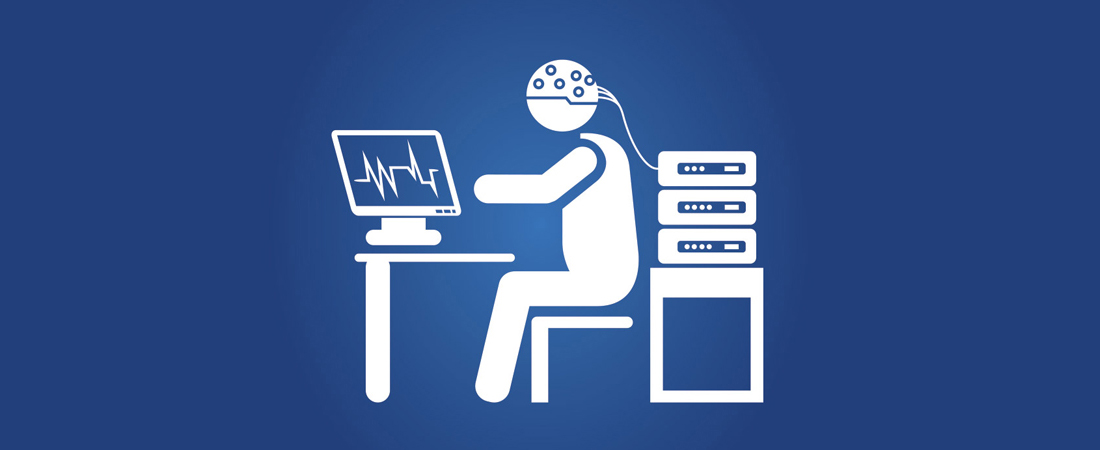
The wonders of Third Millennium
Wearable Technologies
For improving your Physical and Mental Health
This is the most important section on this website. It’s where we keep the secret sauce. No, really.
Just to give you a taste of what is in store for you, consider the following very different cases.
- I met a twenty-year old man who had been bedridden for six years due to a seemingly incurable case of ‘clinical depression’. In just twelve weeks, using a simple and inexpensive neurotechnology, Sean was off his meds, he got a job, got his driver’s license, went back to school to get his high school diploma and asked a girl out for the very first time in his life. His mother later confided “we saw a significant change in our son’s demeanour, his attitude and his general outlook. I was astonished and watched in utter fascination how, before my eyes, my son was transformed. It was like he just stepped out of a gorilla suit.”
- In another challenging case, I worked with a forty-five-year-old ex-policeman, a very fit, sensible, competent man who had contracted Parkinson’s, one of the most debilitating diseases of our time, right up there with MS, Alzheimer’s, Dementia and other neurodegenerative diseases. When I met him, his dyskinesia had progressed to the point where he was totally dependent on his family for his everyday survival. Within a few minutes of using a neurostimulator, Steven stopped twisting and shaking almost entirely and burst into tears with relief. Needless to say, it was a very emotional moment for us all. We worked together for three months to stabilize and improve his motor control. That summer, he entered and completed several golf tournaments in his area.
- A fit and healthy34-year-old man came to see me in hope of resolving the horrendous problems he was dealing with as a result of a Traumatic Brain Injury (TBI) he suffered at the age of 10 that caused his mood and behaviour to deteriorate significantly. He grew distant and lashed out in anger, struggling with emotions and self-esteem. He got into drugs, was frequently in trouble with the law and had three short stints in prison. Following a brief treatment protocol combining non-invasive Photonic and Electronic Brain Stimulation technologies over a period of four months, Kieran underwent a radical transformation. He felt as if something deep within him had finally untwisted, allowing his brain to breathe anew. He started navigating life without aggression, maintaining focus and tackling challenges effectively, rekindling his love for reading, rebuilding social connections, handling responsibilities, paying bills on time and standing taller, free from past troubles.
Hard to believe? Not at all.
Welcome to Third Millennium Star Trek Medicine!
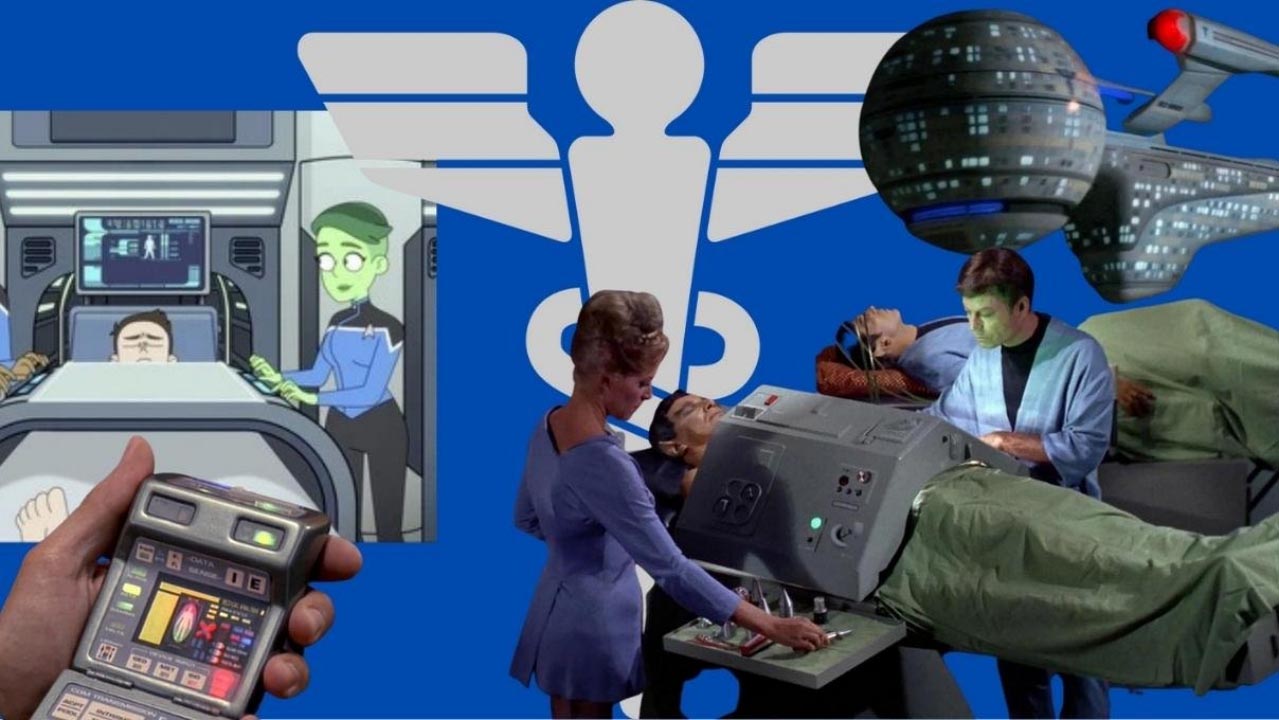
Science is so far ahead of what we can even imagine it can do for us, it is simply unthinkable today that we would look no further than traditional medicine to heal everything that afflicts our body and troubles our mind.
We have entered the age of Third Millennium Star Trek Medicine, a time when we can use safe, simple, inexpensive, non-invasive, user friendly, home based technologies to heal ourselves.
In several episodes of Star Trek in the 1960’s, handheld laser devices were used routinely to heal wounds and tissues with beams of light.
Science Fiction?
60 years ago, we imagined we could use a laser beam to repair damaged cells and tissues. Today we have ready access to an abundance of first class, clinically tested, FDA approved, inexpensive, completely safe and highly effective technologies that do exactly that and are designed to use and practice and experiment with in the comfort and privacy of our home, to suit our very own individual needs.
They have been shown to produce consistent, significant and rapid improvements, some quite remarkable, in the physical and mental wellbeing of the users, without any of the side effects associated with traditional medicine.
My job is not to sell Technologies, but rather to research the latest developments in Wearable Neurotechnologies and Biotechnologies, test them and learn to use them, evaluate and recommend the one(s) best suited to your own particular goals and situation, and to each you how to use them for the greatest benefit of your physical and mental health.
If you would like to know more about the Science behind the Technologies, please click here. I bet you’ll be astonished at how long they have actually been around
Here is a quick look at some of the amazing Wearable Technologies I use with great success in my practice to help my clients vastly improve and accelerate their results.
Cranial Electro Stimulation (CES)

This deceptively simple device is a piece of pure brain magic. Consider the following:
- Would you like to be able to ‘dial up’ relaxation when you feel overstressed and immediately start to feel calm, cool and collected?
- Would you like to chase away the blues and feel happy, serene, content?
- How about boosting your alertness, energy and productivity level to see you through a busy day WITHOUT the caffeine?
- Can’t keep the weight off?
- Want to stop smoking? Drinking? Worrying?
- Need to plan, create, design, solve a problem?
- Would love to fall asleep, stay asleep and wake up refreshed?
- Have someone you care about with PTSD or a child with ADHD?
You can! This is the magic Cranial Electro Stimulation, and these are just a few of the benefits that a CES unit can readily provide.
A Cranial Electro Stimulator is a non-invasive and completely safe appliance that passes a very faint alternating current through the whole brain using ear-clip electrodes.
It was pioneered by a group of brilliant scientists over 100 years ago and it is widely used today by veterans in the US Armed Forces who experience PTSD to calm their hypervigilant brains.
You just set it, put it in your pocket, forget it and go about your normal daily activities while it works in the background. Anytime you feel like it. Anywhere you are.
Some of the units on the market address unique conditions (say, depression, for example) while others cover a broader range of applications (say, alertness or pain management, for example).
When considering the use of a CES unit, we will look at the different features, benefits and cost of each unit and select the one that will best serve your needs. I will teach you how to ‘dial up’ the capabilities your brain needs to improve the way you feel and function in your daily work and personal life.
If you would like to know more about how Cranial Electro Stimulation works and the Science behind it, please click here.
Price range: US$500-$800
Transcranial Direct Current Stimulation (tDCS)

If you’ve never heard of “Transcranial Direct Current Stimulation” (tDCS), Google it and you will get about half a million results!
tDCS is the art and science of passing an extremely weak direct current through targeted areas of the brain using sponge electrodes.
It is completely safe, non-invasive and very different than you may initially imagine. It would barely light a bulb on a Christmas tree. It is also far from new. Some 200 years ago, it was known in the medical field as Faradization.
Yet, tDCS can successfully resolve many physical and mental ailments or disfunctions such as:
- Depression
- Anxiety
- Anger
- Insomnia
- Fibromyalgia
- Stroke
- Concussion
- Symptoms of Parkinson’s and Lyme disease
It is equally effective at improving:
- Sports and professional performance
- Memory and executive function
- Emotional intelligence
- Visual acuity
- Language learning
- Balance in the elderly
- Facility with Irish Accents and shameless use of wit and humour whenever possible. No, really :)
And of course, you don’t have to be sick to want to get better. In this video, Dr Vince Clark describes how he uses tDCS for Cognitive Enhancement. Just one of many possible uses and neuro-enhancements available with tDCS.
We will work together to identify the particular areas of your brain that need attention and I will teach you where to place the electrodes and how to dial up the current to get the maximum benefit from the use of your tDCS unit.
If you would like to know more about how transcranial Direct Current Stimulation works and the Science behind it, please click here.
Price range: US$400
Microcurrent Electric Therapy (MET) for Pain

Most of us experience pain throughout our life. Some pain dissipates after an injury has healed but some of us live with persistent recurrent chronic pain.
Pain is almost impossible to avoid but suffering is not. It can be ‘dialed down’. Would you like to know how?
Microcurrent Electric Therapy (MET) can ‘turn off’ or ‘turn down’ pain receptors in the body almost instantly and for as long as you need it. It is a remarkably powerful non-invasive enabler of healing.
For more information on MET, please see this instructive article and tutorial by Dr Daniel Kirsch here. I promise you will be totally amazed at the number of painful conditions you can relieve rapidly, effectively and inexpensively in the comfort of your own home, at work, while driving, pretty well anywhere anytime, without any of the side effects of pain medication.
I will teach you how to use a MET unit, how often and for how long, and where to place the electrodes to get optimum relief from your pain.
These are the conditions that respond well to MET:
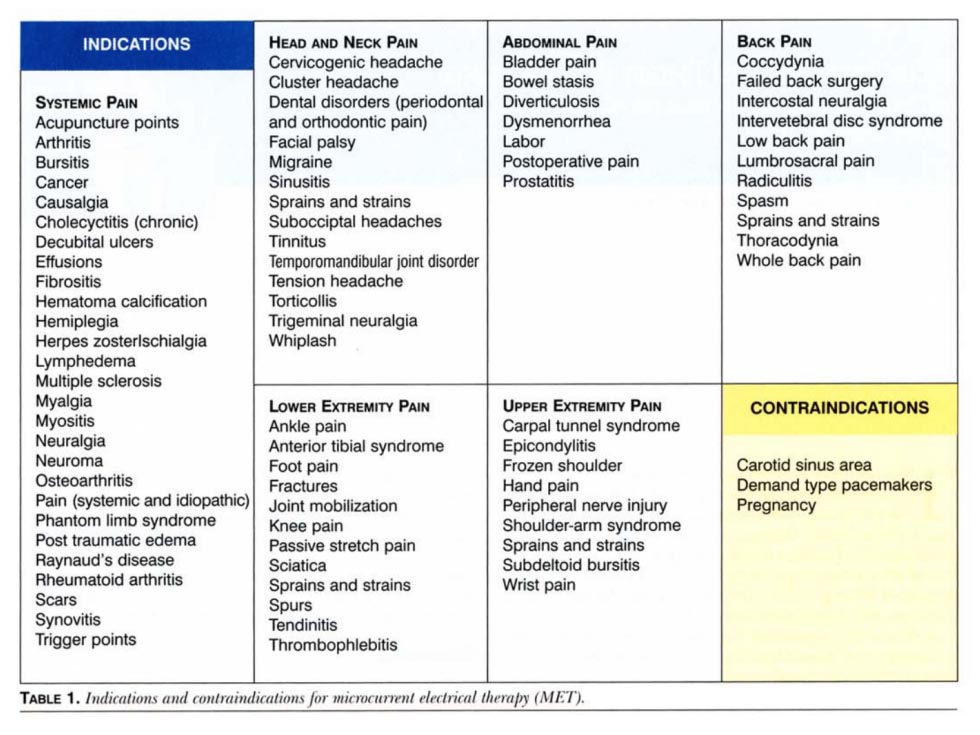
Price range: US$200-$400
Photo Bio Modulation (PBM)

A Photobiomodulator (PBM) is a non-invasive and completely safe appliance that uses light (photons) to heal the body and the brain at the cellular level. It's a bit like a spa day for your cells, making them happier, more productive, and better at keeping you healthy. And the best part? It's safe, painless, and has the potential to benefit a wide range of health issues without any harmful side effects.
Imagine your body as a complex machine with trillions of tiny workers (your cells) who all diligently carry out various tasks to keep you alive and well. These cells need energy to function properly, just like how you need food for energy. This energy is produced inside the cells in small structures called mitochondria, often referred to as the cell's powerhouses.
The light emitted by a Photobiomodulator is carefully tuned to a specific wavelength that can penetrate your skin and reach these mitochondria. When the light reaches the mitochondria, it essentially gives them a gentle boost, like a dose of sunlight for your cells.
This boost produces some pretty amazing effects on your whole body and brain:
- Increases cellular energy production
- Strengthens the immune system
- Reduces inflammation and alleviates symptoms of inflammatory conditions
- Accelerates healing of wounds and injuries, and recovery from surgeries
- Helps calm the brain and resolve mood disorders like depression and anxiety
- Regulates sleep patterns
- Relieves pain from injuries, arthritis or chronic conditions
- Accelerates muscle recovery after workouts or injuries
- Relieves joint pain and alleviates conditions like osteoarthritis and rheumatoid arthritis
- Reduces symptoms of neuropathy
- Ameliorates various skin conditions like acne, psoriasis, and dermatitis
- Promotes hair growth
If you would like to know more about how Photobiomodulation works and the Science behind it, please click here.
Price range: US$450-$1200
Intranasal PhotoBioModulation (iPBM)

An Intranasal Photobiodulator (iPBM) is a therapeutic non-invasive device that applies specific wavelengths of light, in the infrared and near-infrared spectrum, to the nasal passages to stimulate cellular function, produce energy, reduce inflammation and repair tissues in the body.
It works by shining light up your nose. I know it looks funny but it is very effective because the light gets absorbed by the blood in your nasal capillaries and is transported straight to your brain. The blood then delivers the energy throughout your body and increases mitochondrial activity, the powerhouse that regulates the proper functioning of all our cells.
The iPBM device targets the parts of the brain responsible for:
- Cognitive function, memory and mental clarity
- Neurodegenerative disorders
- Headaches, migraines and other forms of chronic pain
- Arthritis and sinusitis
- Infections
- Chronic inflammation
- Blood circulation
- Mood and sleep quality
Price range: US$400-$1100
Transcranial Photo Bio Modulation (tPBM)
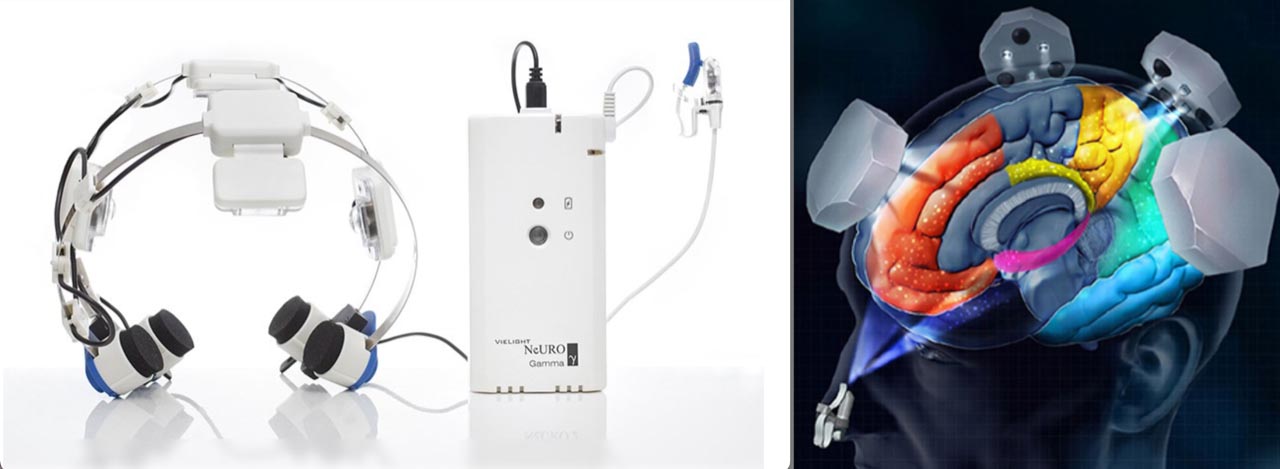
Like the Intranasal device described above, a Transcranial PhotoBioModulator (tPBM) is a non-invasive therapeutic device that uses specific wavelengths of light, often in the red or near-infrared spectrum, to energize the neurons inside the brain but at a deeper level to improve cerebral blood flow, oxygen availability and consumption, adenoside triphophosphate (ATP) production, and mitochondrial activity.
Research on the effect of tPBM on brain cell recovery has shown that damaged neurons can regrow their neurites with direct exposure to light. tPBM has also been found capable of promoting neurogenesis after ischemic stroke through the proliferation and differentiation of internal neuroprogenitor cells.
To put it simply, tPBM penetrates deep into the brain tissue to stimulate cellular processes that can help fight our most problematic disorders today:
- Alzheimer's disease
- Dementia
- Parkinson’s Disease
- Chronic mood disorders such as depression and anxiety
- Fibromyalgia
- Post Traumatic Syndrome
- Traumatic Brain Injury
- Crohn’s Disease
Please take a look at this short video clip that explains how well tPBM works to improve the symptoms of Parkinson’s Disease for example.
Price range: US$1000-$2000
Gut-Brain Axis PhotoBioModulation (gbPBM)
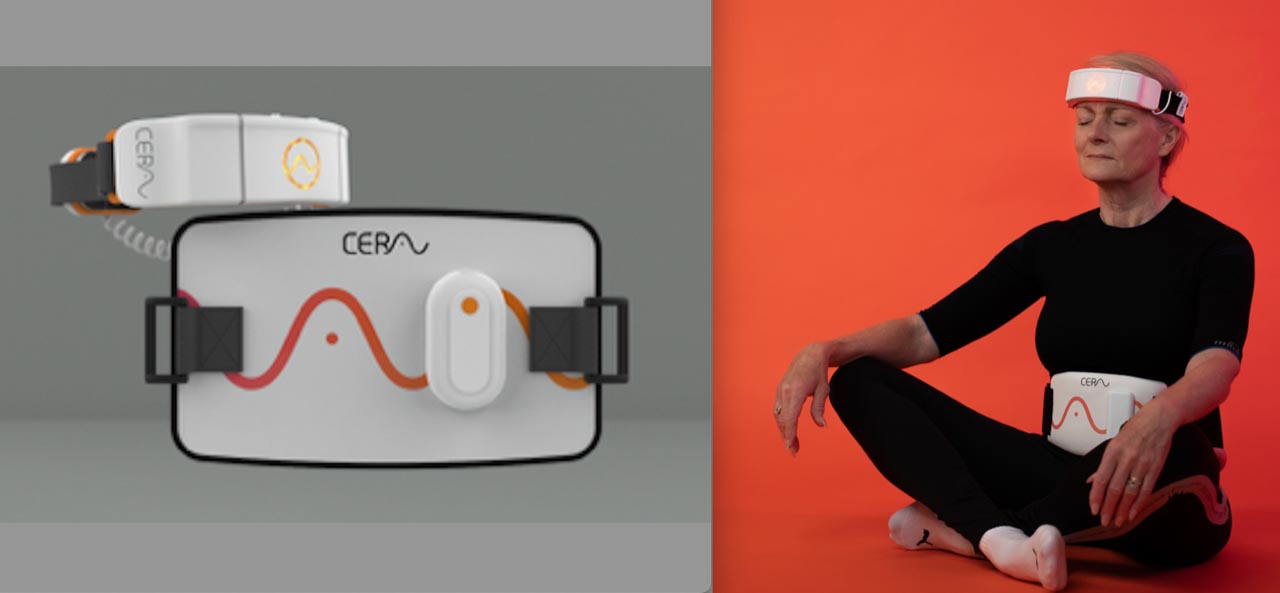
For hundreds of years, medicine has treated the wellness of the brain separately from the wellness of the body as if there was no connection. Today, scientists understand that the intricate relationship between the gut and the brain, often referred to as the "gut-brain axis", is a complex network of communication that influences not only our physical health but also synergistically enhances our emotional well-being.
The Gut-Brain System has the ability to irradiate blood in a large surface area of the body while targeting the head with red light therapy. This simultaneous dual approach helps:
- Stimulate the vagus nerve, regulate autonomic functions and reduce inflammation in our gut.
- Promote a healthy microbiome essential for overall digestive health.
- Deliver a boosted dose of light therapy to the brain precisely where it is needed most.
- Increase energy, motivation and focus to ramp up our productivity.
- Balance and strengthen healthy communication between our gut and our brain.
Specifically, a Gut-Brain Axis Photobiomodulator enables you to dial up specific brain states, like calmness or alertness, when you need them, and the combined healing effects of PBM, iPBM and tPBM to address conditions like:
- Cognitive function, memory and mental clarity
- Neurodegenerative disorders like Alzheimer’s, Parkinson’s or Dementia
- Systemic inflammation like Arthritis, Sinusitis, Crohn’s, IBS or Fibromyalgia
- Headaches, migraines and other forms of chronic pain
- Infections, poor blood circulation or Neuropathy
- Insomnia
- Chronic mood disorders such as depression, anxiety, anger, sadness, etc.
- Post-Traumatic Stress Disorder
- Traumatic Brain Injury
- Many more
Price range: US$1500-$2000
How Do I Choose?
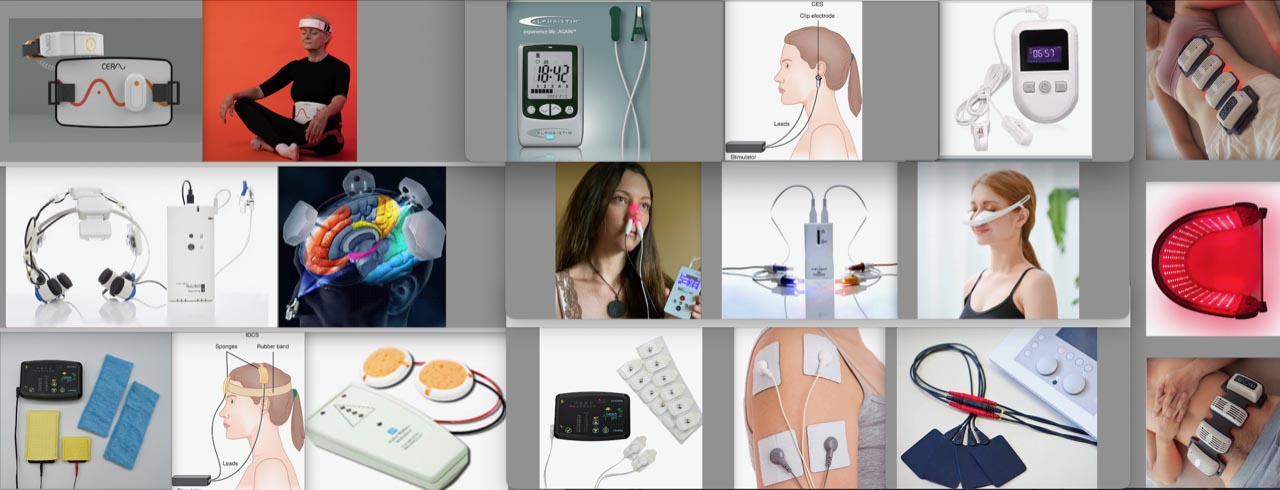
“ARRGH!!! I’m confused! Too many options. How do I know what’s right for me?”
Ah, that’s the easy part. You ask me. It’s my job.
Give me a call or send me a text. My mobile and WhatsApp number is +1 760 333 3348.
Your first consultation is free. We’ll go over what’s ailing you or what you’d like to improve, answer your questions and make recommendations on the best solution for your own particular needs based on your goals and your budget.
That’s it. Easy Peasy.
I look forward to meeting you.
NO PRESSURE. NO OBLIGATION. PROMISE.
